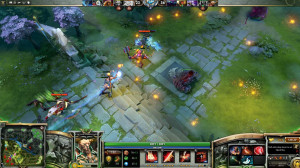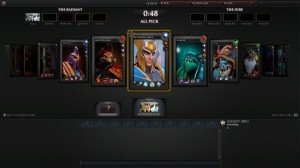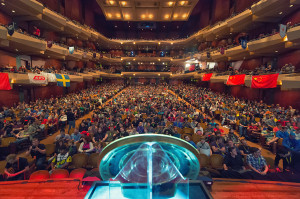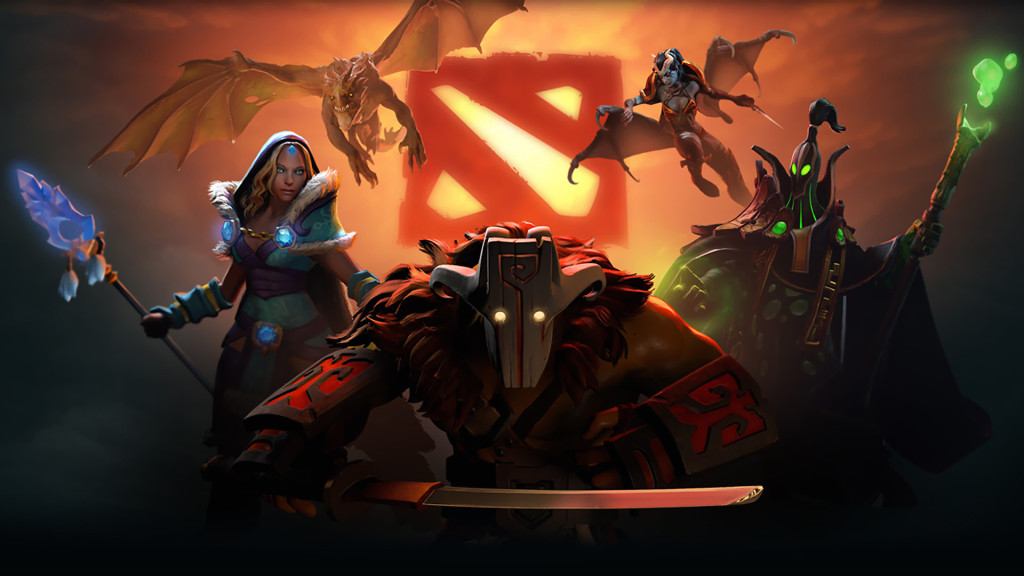The Rise of Dota 2
In March 2012, Valve’s Dota 2 was played by almost 300,000 people at the same time, edging ahead of The Elder Scrolls V: Skyrim to become the game with the most concurrent users on Steam ever. At that time Dota 2 was still in beta. Since then, the number of simultaneous Dota 2 players has peaked at 500,000. It’s the second most popular game on the streaming service Twitch.tv, just behind League of Legends, but since its release from beta it’s grown over 500% on Twitch in terms of number of minutes watched. In 2013, Dota 2 won IGN’s best overall multiplayer game award, among with many other trophies. What’s the secret behind Dota 2’s success? Futhermore, should you play it?
 Dota 2 originated as a popular mod of Warcraft III; where instead of managing a whole army, players controlled a single hero in a five-against-five battle to destroy their enemy’s base. The many competing versions of Dota contained hundreds of different heroes, each with four different abilities and hundreds of different items they could buy over the course of the game. Eventually, these versions were condensed by the developer Guinsoo into one mod, called Dota All-Stars, and later balanced by the legendary anonymous developer, Icefrog. Since then, Guinsoo has gone on to work on the hugely popular Dota-like game, League of Legends, while Icefrog has worked on Dota 2 with Valve.
Dota 2 originated as a popular mod of Warcraft III; where instead of managing a whole army, players controlled a single hero in a five-against-five battle to destroy their enemy’s base. The many competing versions of Dota contained hundreds of different heroes, each with four different abilities and hundreds of different items they could buy over the course of the game. Eventually, these versions were condensed by the developer Guinsoo into one mod, called Dota All-Stars, and later balanced by the legendary anonymous developer, Icefrog. Since then, Guinsoo has gone on to work on the hugely popular Dota-like game, League of Legends, while Icefrog has worked on Dota 2 with Valve.
The original Dota is a game that, quite frankly, should never have been successful. Not only did players have to be familiar with the abilities of every hero – a daunting task of memorization – but the unorthodox uses of the Warcraft III engine caused a variety of frustrating interactions and bugs that also had to be memorized. Certain items would cancel the effects of other items or, worse still, cause a hero’s basic attack to stop working. Some abilities made heroes immune to being stunned or slowed by other heroes – except for certain stuns or slows that, due to the Warcraft III engine, had to be coded in a slightly different way, and worked just fine. It was a game with a learning cliff, not a learning curve.
Among its players, the ridiculous difficulty of the original Dota bred a cult-like devotion to the game. Having invested so many hours in learning all the basic knowledge, players didn’t want to think they’d wasted their time – and, thanks to the work of Icefrog, Dota All-Stars was actually very fun to play. Previous versions of Dota had been grossly unbalanced, with certain overpowered heroes always winning, but Dota All-Stars managed, somehow, to make a game with hundreds of heroes and items fair. However, while the game was balanced for experienced players, it didn’t seem that way for many beginners.
 Dota players tended to look down on beginners who constantly complained that particular heroes or items were overpowered. In fact, the heroes who dominated beginner games were actually quite weak at higher levels of play, and many of the heroes who beginners dismissed as useless were very strong. Online games of Dota on Warcraft III’s Battle.net often tried to discourage beginners from joining, since one bad player could ruin the game for their whole team. Even worse, players could leave any time they wanted, which meant that everyone remaining either had to play with uneven teams or restart the entire game. It was an environment that bred a terrible community: unfriendly to new players, harshly critical of unsuccessful teammates, and full of games where players would abandon as soon as one team gained a minor advantage.
Dota players tended to look down on beginners who constantly complained that particular heroes or items were overpowered. In fact, the heroes who dominated beginner games were actually quite weak at higher levels of play, and many of the heroes who beginners dismissed as useless were very strong. Online games of Dota on Warcraft III’s Battle.net often tried to discourage beginners from joining, since one bad player could ruin the game for their whole team. Even worse, players could leave any time they wanted, which meant that everyone remaining either had to play with uneven teams or restart the entire game. It was an environment that bred a terrible community: unfriendly to new players, harshly critical of unsuccessful teammates, and full of games where players would abandon as soon as one team gained a minor advantage.
In Dota 2, the graphics received a serious update, and Warcraft III’s primitive item shop system was replaced with a shop actually designed for Dota. However, when it came to gameplay, the developers of Dota 2 were in a tough position. All the quirks of the Warcraft III engine that confused new players – turn rates, units blocking other units – had become part of the game. Heroes were built around these things, and ‘streamlining’ the game would destroy the careful balance that was arguably its best attribute. In the end they compromised: ‘fixing’ some of the worst bugs, but leaving most of the mechanics in place.
Where Dota 2 differs substantially from Dota All-Stars is in its approach to the community. In Dota 2, abusive players can be muted for a period of time as punishment, and players who leave games are sent to the low-priority pool to play with other leavers. The matchmaking system organizes players into games with players of the same skill level, to stop experienced players being matched up with total beginners. While the nature of Dota 2 still makes for plenty of abrasive encounters, it’s no longer the lawless wasteland that was the Dota All-Stars community.
 One final reason for Dota 2’s popularity is the thriving professional scene. The top teams of Dota All-Stars migrated to Dota 2 almost instantly, as well as many top players from Dota-like game, Heroes of Newerth. Valve’s annual Dota 2 tournament, The International, has grown year on year, both in terms of prize money and community interest. In 2013, The International saw a prize pool of over 2.8 million dollars, the largest prize pool in electronic sports history (beating out League of Legends’ two million dollar prize pool). Throughout the year, other tournaments – WPC-ACE in China, MLG Columbus in America – have featured prizes in hundreds of thousands of dollars.
One final reason for Dota 2’s popularity is the thriving professional scene. The top teams of Dota All-Stars migrated to Dota 2 almost instantly, as well as many top players from Dota-like game, Heroes of Newerth. Valve’s annual Dota 2 tournament, The International, has grown year on year, both in terms of prize money and community interest. In 2013, The International saw a prize pool of over 2.8 million dollars, the largest prize pool in electronic sports history (beating out League of Legends’ two million dollar prize pool). Throughout the year, other tournaments – WPC-ACE in China, MLG Columbus in America – have featured prizes in hundreds of thousands of dollars.
Many Dota 2 players actually watch more games than they play. What makes competitive Dota 2 so entertaining to watch is the wide variety of strategies teams use. The International 2012 was dominated by ‘Chinese Dota’, a strategy based around defensive play and earning more money than your opponent, but in the semi-finals fan favourites Na’Vi took out a massive upset win against Invictus Gaming by playing very aggressively. The decisive moment of that game is just called ‘The Play’ by Dota fans – not just a well played fight, but proof that the defensive Chinese juggernaut could be defeated.
In 2013, the dominant strategy was avoiding fights by attacking multiple areas of the enemy base at the same time, derisively called ‘rat Dota’ by fans who found it less exciting to watch. The finals of The International 2013 saw a clash between the masters of rat Dota, The Alliance, and the more aggressive team, Na’Vi. The best of five match progressed to a full five games, the last of which was about as close as it’s possible for a game to be. In the end, The Alliance took home almost one and a half million dollars.
Despite Valve’s efforts, Dota 2 is still a difficult game to get into, but it’s worth it if you’ve got the time to spend learning. As the game grows, more and more people are making the investment of effort. Like Dota All-Stars, Dota 2 is free to play – even more so than League of Legends, which requires you to spend money or time before you can play many of the champions. If you’re looking for a team-based game that rewards careful strategy and daring plays, it’s hard to do better than Dota 2.



